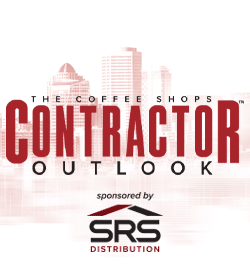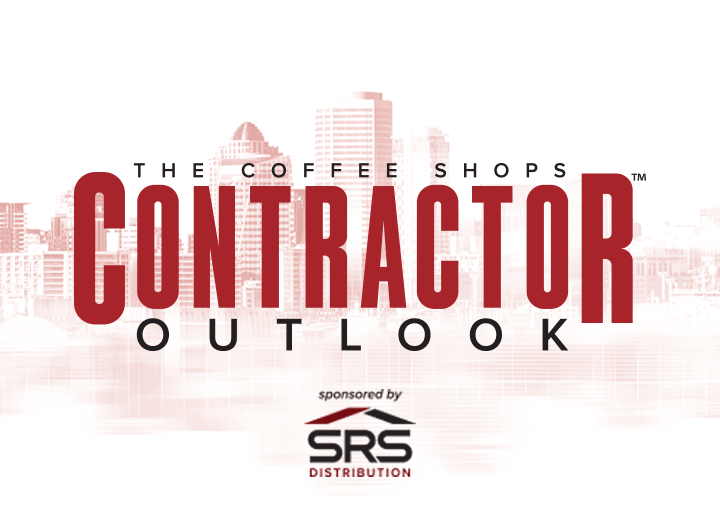UP TO THE MINUTE
Navigating regulatory pressures: How roofing contractors can prepare for challenges in the coatings industry
May 7, 2025 at 8:30 a.m.CCS Influencer John Kenney says that, in a market where trust and performance matter more than ever, compliance is good business.
As the demand for roof coatings continues to grow across commercial and residential markets, contractors working in this space must pay close attention to the regulatory landscape. Coating products offer real advantages — extended roof life, improved energy efficiency and reduced landfill waste from full tear-offs. However, as with many construction and building materials areas, the coatings industry is under increasing scrutiny from environmental and safety regulators. Roofing contractors who stay ahead of these changes will be better positioned to protect their businesses, ensure compliance and maintain a competitive edge.
One of the most pressing regulatory challenges in the coatings industry is tightening volatile organic compound (VOC) limits. VOCs are carbon-based chemicals that evaporate into the air during application and drying, contributing to air pollution and posing health risks to workers and occupants. Many coating products — especially solvent-based — contain VOCs regulated at the state or federal level.
Regions like California, which operates under the South Coast Air Quality Management District (SCAQMD) and the California Air Resources Board (CARB), have already imposed some of the strictest VOC limits in the country. However, other states are following suit, and contractors can expect more jurisdictions to lower allowable VOC levels or ban certain solvent-based products altogether. The EPA may also enforce stricter standards through the Clean Air Act as national air quality targets evolve.
To prepare, contractors should familiarize themselves with local and state VOC regulations and proactively source low-VOC or zero-VOC coatings that meet performance standards. Maintaining close relationships with manufacturers who stay ahead of regulatory developments and can provide clear documentation about product compliance is also wise.
Another growing area of focus is chemical transparency and ingredient disclosure. Federal, state and municipal regulators increasingly require manufacturers to disclose chemical content in coating products, especially those known or suspected to pose health risks.
For contractors, this means two things: first, be prepared to answer questions from building owners or facility managers about what's in the products you're applying. Second, ensure your team knows how to handle these materials safely by following safety data sheets (SDS), using appropriate PPE and storing chemicals in accordance with OSHA standards and local fire codes.
Worker safety regulations tied to coatings are also becoming more stringent. OSHA's Hazard Communication Standard (HCS) requires employers to train workers on the hazards of chemicals they may be exposed to, label products clearly and maintain access to SDS. Contractors who apply roof coatings in enclosed or poorly ventilated spaces may also trigger OSHA requirements around respirator use, silica exposure and permissible exposure limits (PELs) for specific compounds.
To manage these risks, contractors should conduct regular safety training focused on coatings application, reinforce PPE usage — including gloves, respirators and eye protection — and document all safety protocols. Proactive safety measures help avoid fines and reduce the chance of injury or illness on the job.
Many coatings come with manufacturer warranties tied to specific surface prep, application methods and environmental conditions. Failing to follow these standards can void warranties or lead to premature failure, which may lead to disputes or legal exposure for the contractor.
Contractors should work closely with coatings manufacturers to ensure proper substrate testing, moisture content verification, ambient condition monitoring and application thickness tracking. Using a digital recordkeeping system or mobile app to log these conditions can help demonstrate compliance if any issues arise later.
Fire and building code compliance is another area where contractors must stay informed. Certain roof coatings, particularly those used on combustible substrates or in wildfire-prone regions, may need to meet Class A fire ratings or comply with new local ordinances to improve fire resistance. As cities across the U.S. strengthen their fire codes in response to climate-related threats, roofing contractors using coatings systems must verify that products meet code requirements, mainly when used for retrofit or restoration projects.
Contractors should also be aware of emerging legislation tied to green building programs and energy codes, such as LEED, Title 24 (California Energy Code) or the International Energy Conservation Code (IECC). Reflective coatings used to lower rooftop temperatures and reduce urban heat island effects are increasingly incentivized, but only if they meet criteria around solar reflectance, thermal emittance and long-term performance.
Choosing products listed by the Cool Roof Rating Council (CRRC) or ENERGY STAR® is smart for contractors bidding on energy-conscious projects. Contractors should document performance claims and apply products exactly as tested to preserve those benefits and meet code requirements.
Finally, contractors should prepare for expanded documentation and accountability. As supply chains tighten and enforcement becomes more digital, expect more permitting authorities, general contractors and building owners to request documentation of coating product specs, VOC content, safety training records, SDS compliance and even applicator certifications.
To stay competitive, roofing contractors in the coatings segment should invest in ongoing training, strong supplier partnerships and internal compliance systems. Designating someone on staff to monitor regulatory changes — especially in states like California, New York or Washington — can help you stay a step ahead. Joining trade associations or attending industry conferences is another way to stay informed and connected to evolving best practices.
Final thoughts
The regulatory landscape surrounding coatings is becoming more complex, with new rules emerging around air quality, chemical safety, fire resistance and energy performance. Contractors who take a reactive approach may find themselves scrambling to adapt — or worse, dealing with penalties or failed projects.
But those who stay proactive — by selecting compliant products, documenting application methods, training crews and monitoring state-by-state changes — will position themselves as trusted, knowledgeable professionals. In a market where trust and performance matter more than ever, that's not just good compliance — it's good business.
John Kenney is the CEO of Cotney Consulting Group. See his full bio here.


















Comments
Leave a Reply
Have an account? Login to leave a comment!
Sign In